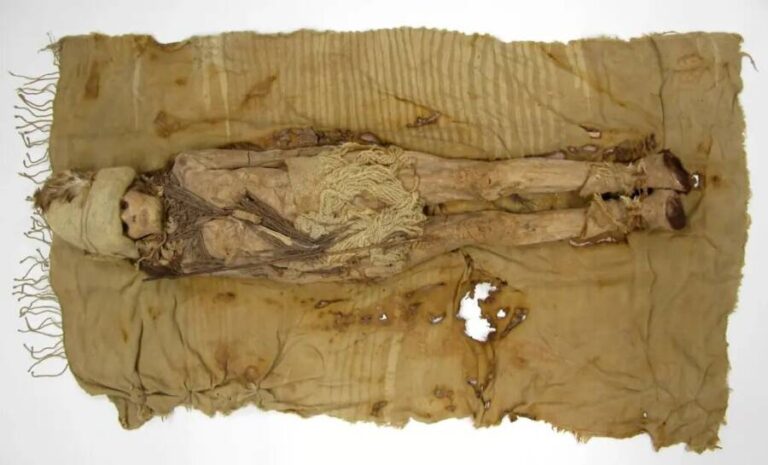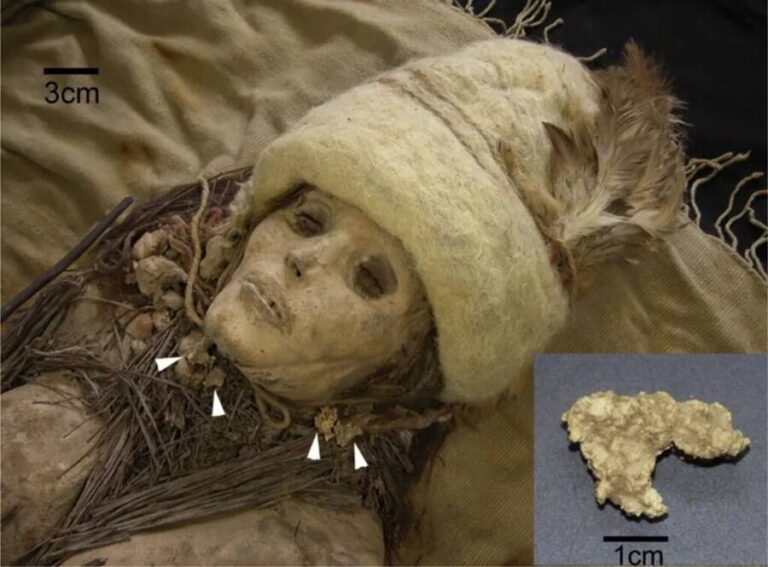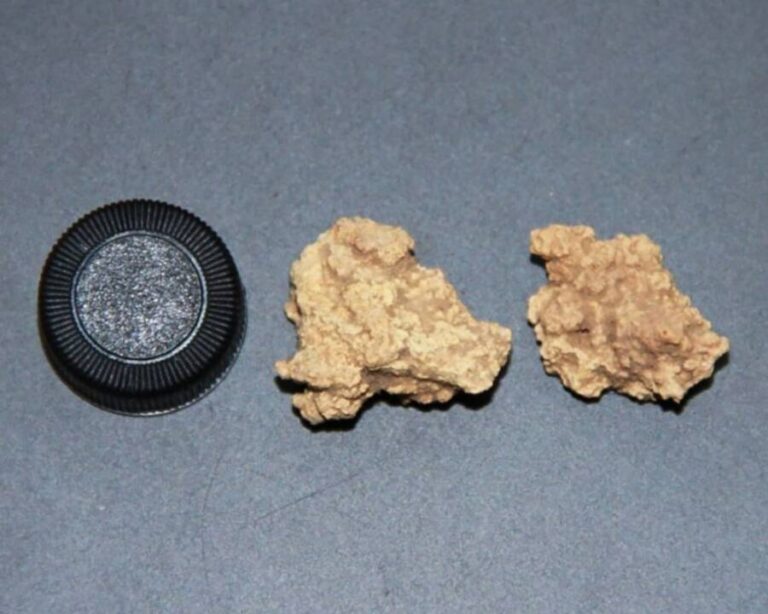While it may now resemble “really dry, dense, and hard dust,” this ancient cheese was once soft kefir cheese made from cow and goat milk.
A Remarkable Discovery
Scientists have finally unraveled the mystery of peculiar chunks found alongside 3,600-year-old mummies in the Xinjiang region of China. DNA analysis has revealed the substance as the world’s oldest known cheese, offering a fascinating glimpse into dairy production during the Bronze Age.

Cheese and Ancient Burial Rituals
More than two decades ago, excavations at Xiaohe Cemetery in the Tarim Basin revealed several Bronze Age mummies. Among them was a 3,600-year-old female mummy adorned with strange, hardened substances around her neck. These chunks have now been identified as kefir cheese, thanks to a recent study published in Cell.
The researchers noted the presence of proteins from ruminant milk, along with lactic acid bacteria and yeast, which confirmed the substance as kefir cheese. Remarkably, this discovery offers rare physical evidence of ancient dairy practices.

Shedding Light on Cheese Production in Antiquity
Food preservation over thousands of years is exceptionally rare, making this find particularly valuable. According to Qiaomei Fu, a paleogeneticist involved in the study, analyzing the ancient cheese provides insight into the dietary habits and culture of the Xiaohe people.
DNA analysis revealed the cheese was made from a blend of cow and goat milk, coagulated by bacteria and yeast to form kefir grains. This process reduced lactose content, allowing the lactose-intolerant Xiaohe population to enjoy the cheese.

A Cultural Exchange Through Dairy
The discovery also suggests the Xiaohe people adopted cheese-making practices from the Eurasian steppe, evident in the goat DNA found in the samples. This cross-cultural interaction likely shaped the development of animal husbandry and fermented dairy products in the region.
Bacteria That Stand the Test of Time
Further analysis showed preferences for bacterial strains that minimized gastrointestinal distress, shedding light on the evolving relationship between ancient communities and their diets.
A Mystery That Remains
While researchers have pieced together how the cheese was made, its role in burial practices remains unclear. Why was kefir cheese placed with the deceased? The answer to this intriguing question continues to elude us.
The Legacy of the World’s Oldest Cheese
As the oldest known cheese, these kefir samples are a testament to the ingenuity of ancient dairy practices. This discovery not only highlights the culinary sophistication of the Xiaohe culture but also strengthens our understanding of the interconnectedness of ancient civilizations.


